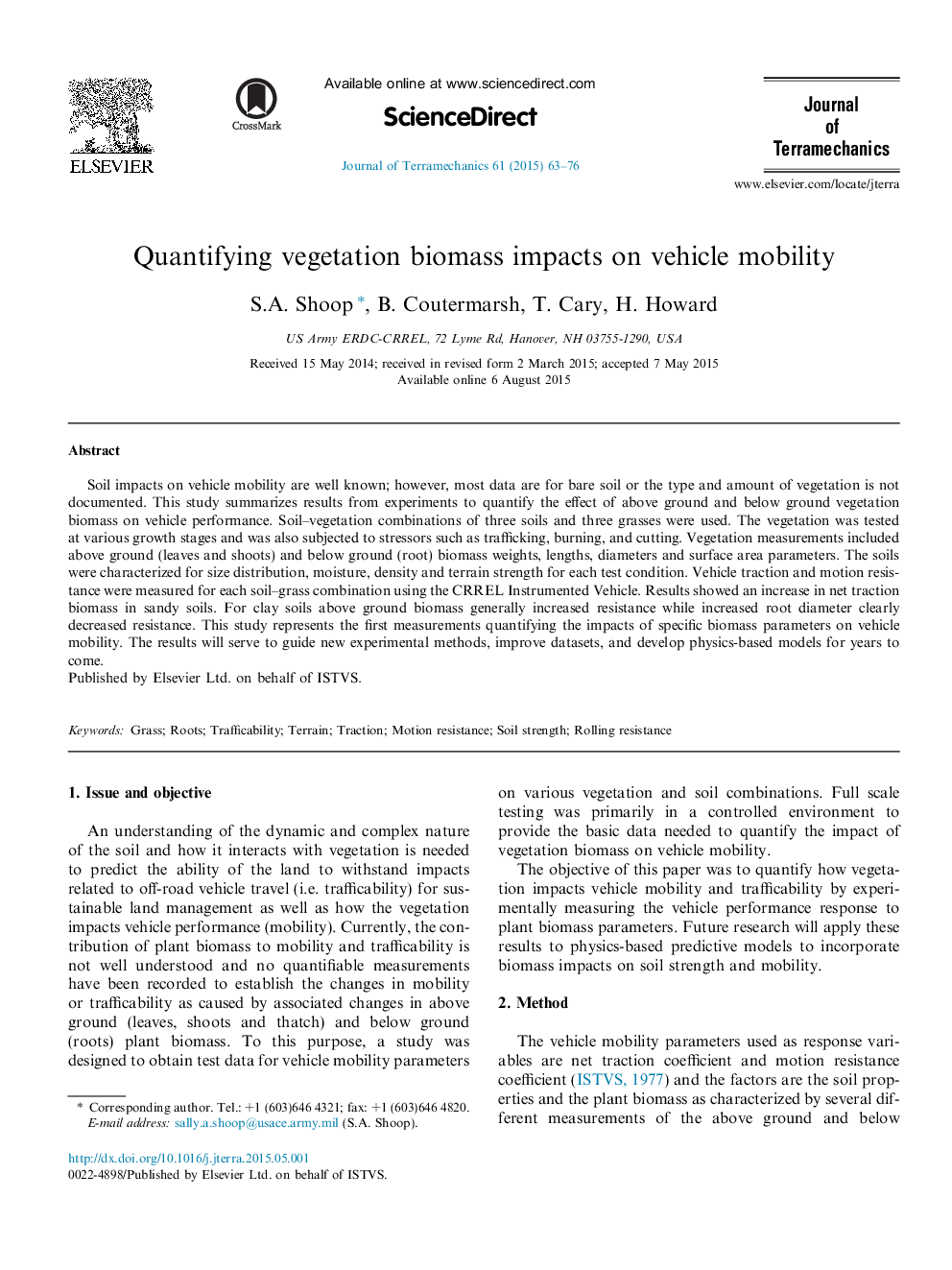| Article ID | Journal | Published Year | Pages | File Type |
|---|---|---|---|---|
| 799840 | Journal of Terramechanics | 2015 | 14 Pages |
•Vegetation (e.g. grass) biomass affects terrain strength and vehicle mobility.•Prior to this work, biomass has not been measured to quantify impact on mobility.•Above and below ground biomass is quantified by length, diameter, surface area, etc.•Many biomass parameters result in increased traction for sandy soils.•In clay, above ground biomass increased resistance and root diameter decreased resistance.
Soil impacts on vehicle mobility are well known; however, most data are for bare soil or the type and amount of vegetation is not documented. This study summarizes results from experiments to quantify the effect of above ground and below ground vegetation biomass on vehicle performance. Soil–vegetation combinations of three soils and three grasses were used. The vegetation was tested at various growth stages and was also subjected to stressors such as trafficking, burning, and cutting. Vegetation measurements included above ground (leaves and shoots) and below ground (root) biomass weights, lengths, diameters and surface area parameters. The soils were characterized for size distribution, moisture, density and terrain strength for each test condition. Vehicle traction and motion resistance were measured for each soil–grass combination using the CRREL Instrumented Vehicle. Results showed an increase in net traction biomass in sandy soils. For clay soils above ground biomass generally increased resistance while increased root diameter clearly decreased resistance. This study represents the first measurements quantifying the impacts of specific biomass parameters on vehicle mobility. The results will serve to guide new experimental methods, improve datasets, and develop physics-based models for years to come.
